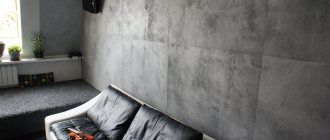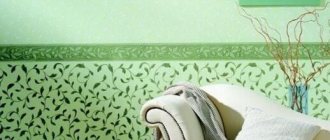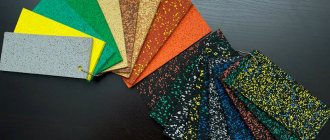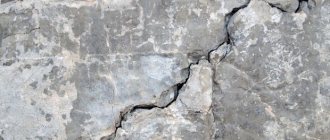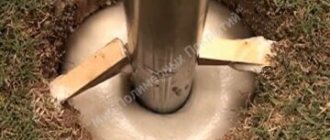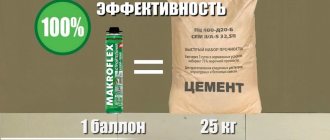Linoleum has long occupied a leading position among materials used for flooring. This is explained by the convenience and ease of installation, variety of types, ease of maintenance and favorable cost. It can be used in rooms with different conditions, performing well and withstanding negative impacts for many years. When beginners, and not professionals, are going to lay linoleum, they wonder whether it is necessary to glue the linoleum to the floor, or whether this stage of work can be dispensed with. A detailed analysis of this issue will be given below.
Adhesive for linoleum from natural materials
For this special and expensive type of flooring, a special adhesive is produced that contains a small amount of water in its composition, since water tends to deform natural linoleum, which is sensitive to moisture.
Professional adhesives take into account the parameters of the surfaces being bonded, which guarantees the quality of the connection and long service life under temperature changes. To prevent deformation, the joints of the coating strips are glued with a strong fixing compound, ensuring a rigid adhesion. This composition is a two-component polyurethane adhesive. It creates an impeccable connection, is durable, and is resistant to moisture.
Why glue when you can just lay it down
How to lay a chipboard floor.
Laying chipboard on a wooden floor, on a concrete floor with your own hands, instructions, photos. Long-term practice of laying linoleum reveals the following facts:
- glued linoleum lasts 40% longer than one laid without glue;
- If linoleum is not glued, it will certainly suffer from temperature changes and changes in humidity.
As soon as the heating starts working in the apartment, the material contracts - unsightly gaps appear between its joints. With the onset of spring, humidity rises, and the flooring responds by stretching and blistering;
- areas where waves and bubbles appear wear out very quickly and begin to look unpresentable, which makes it necessary to change the flooring again;
- Although simple glueless installation of linoleum is recommended for small rooms (up to 20 square meters), defects still soon appear on the soft canvas: depressions from furniture legs, waves and swellings. In addition, non-glued linoleum is easier to move and damage when rearranging heavy furniture;
- The seams between the glued sheets are stronger and come apart much less often.
Prepare the glue yourself
If it is not possible to purchase an adhesive mixture, but you urgently need to fix the linoleum, it is permissible to use a composition prepared by yourself. It is based on any solvent, such as acetone, and linoleum itself. It is necessary to grind a small area of the coating to the state of sawdust.
The smaller the crumb, the faster it will dissolve. To check whether it will be possible to prepare glue, take a small part or half of the shavings and fill it with an arbitrary amount of acetone. Soon a uniform mass will form.
However, its properties will be inferior to the analogues considered, so it is better to use this method in situations where gluing linoleum is a temporary measure.
Is it necessary to glue linoleum KakSkolko.ru
How to level linoleum from waves
Linoleum is a modern, durable floor covering that, with proper installation and good care, lasts more than 10 years.
There are 3 types of linoleum:
- commercial
- semi-commercial
- domestic
Commercial linoleum is used in large premises where a large number of people walk, and semi-commercial and household linoleum is used in small offices or residential premises. They differ from each other in thickness and strength.
Linoleum is laid in almost all rooms of residential premises, such as the hallway, kitchen, bedroom, children's room, bathroom
Please note that this coating is not suitable for balconies, unheated verandas, or gazebos, since linoleum quickly becomes unusable due to temperature changes
How to choose linoleum?
It is recommended to choose linoleum for a room based on mechanical loads and air humidity levels. The thicker the coating, the longer it will last. It is not recommended to choose linoleum thinner than 3 mm.
When choosing linoleum, pay attention to the smell: the more natural the components from which the coating is made, the less the smell will be felt. Most often, cork is used under linoleum, less often jute or linen.
When using a cork backing, marks from heavy objects may remain.
Most often, cork is used under linoleum, less often jute or linen. When using a cork backing, marks from heavy objects may remain.
Laying linoleum
Methods for laying linoleum do not depend on its type. Laying it out is quite simple if you know the basic principles.
Before laying the covering, you should lay the panel face down and leave it in this position for several days until it smoothes out. If the linoleum has been rolled up for a long time, it may need ironing. Most often this is done using sandbags.
Is it necessary to glue linoleum?
There are different opinions about whether it is worth gluing this coating to the floor. The decision depends on a number of factors. The important advantages of this method are that the floor will be perfectly flat, without swelling, and when moving furniture there will be no creases.
If the room in which linoleum is laid is less than 20 square meters in area. and the piece of covering is solid, then you can limit yourself to only securing it along the edges with nails or plinths, but it is still advisable to glue it on the threshold.
If you decide not to glue, then when moving furniture, try to lift it so as not to damage the surface of the linoleum.
When laying linoleum with sizing, you need to remember that when using mastic and dispersion glue, installation is carried out immediately. Bitumen-based mastic requires a short period of time before gluing (15-25 minutes).
There are often uneven corners in rooms, so it is possible to start installation from the center of the room. Composite linoleum should be glued in separate strips, leaving a certain period of time between laying them. If, during installation, swellings have formed or the edges have become detached, you need to press this place with a weight through the plywood, having previously pierced all the bubbles and swellings with an awl.
Tips for caring for linoleum
Caring for this type of flooring is easy.
It is important to remember that it does not like sand or dirt, so it is advisable to place a rug before entering. The material is also afraid of substances containing soda and ammonia, which makes it dull and loses its pleasant appearance.
It is enough to wipe the floors with a damp cloth. Or, if stains form, use special products for linoleum.
To glue linoleum or not - the choice is yours. Just keep in mind that if you decide to replace the coating in the future, you may have difficulty removing it.
Calculation of the required quantity and type of linoleum
Before visiting a hardware store to buy a roll of linoleum, you should decide on its quantity. To do this, you need to measure the length and width of the room and multiply the obtained data. As a result, we will obtain the required area value. On each side you should add 10 cm of reserve.
The most convenient option would be to lay linoleum in one piece, without joints or joints. This coating will last longer, since there will be no parts where the material can break or bend.
If the visit is large enough and installation in one roll is not possible, then the connections of different parts should be carried out with the utmost care, or seek help from professionals.
You need to choose flooring based on the room where it will be located. The higher the load during use, a higher abrasion coefficient is selected. Depending on the expected loads, the following types of linoleum are distinguished:
- Lightweight household - for bedrooms and rarely visited rooms.
- Average household - children's rooms and living room.
- High household - kitchens and hallways.
- Light commercial – offices and conference rooms.
- Medium commercial - training rooms, large offices, small shops.
- High commercial – large shops and restaurants.
A more detailed description of the types of linoleum is presented in the photo below:
The purposes of use are easy to determine from the name - household ones are often used for residential premises, and commercial ones - for offices and shops. At the same time, commercial types of linoleum have an increased margin of safety. Thus, in terms of abrasion coefficient, commercial linoleum for light loads is equivalent to a household coating for high loads.
In terms of the number of colors and patterns, the range of linoleum is very large. The chemical industry is actively using modern technologies to give buyers of linoleum and other floor coverings a design to suit every taste.
Advice! If the coating will be laid in several parts, then you should pay attention to the drawing. You may need to purchase an additional amount of coating in order to correctly assemble the complex pattern at the joints.
Step-by-step instruction
Is it possible to lay laminate flooring on linoleum?
After preparing the linoleum and rough concrete floor for installation, you need to study the operating technology. There are two methods of fixing the material to the surface. The choice of approach for gluing linoleum to a concrete floor depends on the type of coating.
Bonding household coverings
Linoleum of this category is usually used in a single sheet. The width of the material can reach up to 5 meters.
This allows you to not have to worry about adjusting seams and precise cutting at home. It may be necessary to trim the canvas only along its perimeter. There is no need to worry about the perfect evenness of the edges - the plinth will hide all the flaws.
Household material is not as brittle and tough as commercial material. Unfolding and laying out does not require precision or high attention.
At the same time, it is impossible to fix the material until it is completely straightened. If the canvas is much larger than the area of the room, you need to trim it
It is important to leave 5 cm at the edges
Preparation of the material before attaching linoleum to concrete:
- Rolling out and laying the fabric. The edges should extend onto the walls by a maximum of 5 cm.
- Expelling air from under the coating using a brush in the direction from the center to the edges. Instead, you can use your feet in felt boots.
- Rest and smooth the fabric.
- After the irregularities disappear, the linoleum is cut. To do this, press the material against the wall with a ruler and use a knife. Between the wall and the coating you need to leave about 5 mm, but not more than 10.
- Cutting external and internal corners. In areas of pipes and openings, reserve material should be left. After fixing, you can remove the excess.
- Rest the linoleum for several days. During this time, the material should take a permanent shape. He may stretch or shrink a little.
How to stick the canvas:
- Part of the linoleum is folded back.
- Using a notched trowel, apply the composition evenly. In small rooms this is done in the form of a lattice or distributed only along the edges.
- The coating is applied to the glue after the time specified in the instructions.
- The material must be smoothed until the glue sets. For convenience, you can use a special roller.
- Work in the same way with the other half of the linoleum.
A few days after laying the canvas, the coating will take on a constant size. But under the influence of loads, the material will still compress or stretch.
Commercial material
According to the standard, the width of such linoleum is 2 m. Therefore, it is rarely possible to lay it without joints. Only if the repair is carried out in a narrow corridor. The main advantage of the coating is that you don’t have to combine the pattern. This is because the design of linoleum is very simple, without frills. The color of the material is monophonic. The pattern often resembles a concrete screed with marble elements.
Commercial linoleum can be glued to a concrete floor just as easily as household linoleum. The technologies are almost no different. But such material has its own subtleties. These include:
- Non-shrinkability. There is no need to leave a gap between the wall and the material.
- You can cut off the excess along the line where the floor meets the wall.
- The air from under the linoleum is expelled using a chipboard block, which is wrapped in a thick layer of textile. You can also use a roller or do it with your feet.
- The rolled roll is placed on the floor covered with glue. In this case, you need to carefully squeeze out the air from under the material.
The process of installing linoleum to a concrete screed is not as complicated as it seems at first glance. But without knowing the installation technology, you cannot call it easy. By following the basic rules of the process, the work will turn out to be of high quality. Even if a person does not have repair and finishing skills.
Is it necessary to glue linoleum to a concrete floor?
Tape mounting technology
Before fixing linoleum to a concrete floor with tape, it is necessary to cut the seams (using the “overlapping” method), since adjusting the joint after gluing the adhesive tape to the floor is impossible due to the risk of damage to the adhesive tape.
- The settled linoleum is rolled up to the middle. Strips of tape are glued to the floor at the required distance - usually about 1 m. The top protection is not removed.
- Sequentially roll out the linoleum, removing the protective tape immediately before applying the coating.
- The surface is immediately pressed at the location of the tape; for convenience, you can use a thick roller.
Preparatory work
To create a perfectly flat floor, it is necessary to level the surface at the stage of creating the screed. The subfloor must have a thermal insulation layer. Often homeowners decide to install heated floors. This technology is relevant in our time and is capable of efficiently heating the floor.
Laying linoleum on a heated floor is carried out in the same way as on a regular floor, only you will need a “layer” of polyethylene or other rolled material, depending on the type of horizontal heating system.
If it is still not possible to completely eliminate the unevenness and minor differences in height remain, then you can think about using a self-leveling floor. The self-leveling solution will eliminate even minimal unevenness, thereby creating an excellent surface for the floor covering. Cracks on the floor can be repaired with putty.
For the speed and cleanliness of the procedure, many craftsmen fell in love with the leveling method using dry screed or plywood. You can resort to it only when the height of the floor allows it and the foundation is strong.
Preparing the concrete base
Whatever type of linoleum you choose, before you start laying it, you need to prepare the base. The quality of the base directly affects the service life of linoleum. The slightest depressions and protrusions on the surface will cause the new linoleum to wear out quite quickly. It must be smooth, free of debris and old coating, have sound insulation and thermal insulation.
Since we are interested in a concrete floor, we will consider its preparation in more detail. If the differences in the heights of the base do not exceed 2 mm per square meter, then you can simply putty the depressions and eliminate the protrusions.
Before you begin laying linoleum, you must carefully prepare the base
For larger differences, it is worth performing a new floor screed. For these purposes, both traditional screed (concrete or cement) and self-leveling mixtures are suitable. The advantage of the latter option is that they make it easy to obtain a perfectly flat surface and, even with a fairly large thickness, they dry much faster than a regular screed. But even in this case, this process will last several days depending on humidity, air temperature and other factors. After the base has completely dried, if necessary, carry out thermal and waterproofing of the floor.
Options for fixing linoleum
And yet we need to figure out the question of whether it is necessary to glue linoleum. There are only two main ways to fix the material on the floor: with or without glue. Among the advantages of the adhesive fastening method is better coating strength. During use, the coating does not swell, does not ripple after furniture is moved, and there are no dents left on its surface from the legs of a table or cabinet.
Among the advantages of the adhesive fastening method are better coating strength
The fixed material remains perfectly smooth during operation and lasts longer. The coating is durable, the seams are securely fastened.
But this method has its drawbacks. First of all, you need to choose only high-quality glue. If it does not meet the requirements, then after a while it will begin to crawl to the surface. In addition, adhesive fastening is suitable only for those who are not eager to change the interior of the apartment every year, since linoleum is glued, as they say, tightly. Removing the old coating to replace it with another will be problematic. Therefore, you should think carefully about whether you need to glue linoleum.
Among the old fastening technologies without glue - fastening with ordinary nails
Among the old fastening technologies without glue is fastening with ordinary nails. Despite the significant development of technology, the good old method is still alive and is still used along with the more modern one - fastening the sheet using skirting boards.
However, glueless technologies are gradually becoming obsolete. They are no longer popular among professionals. Why will become clear almost immediately after the start of operation. Even a slight movement of the furniture will cause the surface of the material to wrinkle; it will have to be constantly adjusted. And waves are a characteristic feature of a glueless connection. Therefore, even if the room is small, according to experts, the question of whether to glue linoleum is no longer relevant. The answer is unequivocal - “Yes”.
Important! One of the best ways is to attach it to bitumen mastic. This method is good when there are any defects on the screed, and the question arises of how to glue the linoleum, since neither glue nor tape is suitable in this case
Mastic is a good option for gluing linoleum in spacious rooms
This method is good when there are any defects on the screed, and the question arises of how to glue the linoleum, since neither glue nor tape is suitable in this case. Mastic is a good option for gluing linoleum in spacious rooms.
Mastic is a good option for gluing linoleum in spacious rooms
It is recommended to glue the material onto a floor without a base using mastic based on synthetic resins. To work with material based on felt or fabric, especially if it needs to be glued to a wooden floor, types of mastic are used:
Bituminous mastic will additionally serve as waterproofing
Bituminous mastic will additionally serve as waterproofing. But before application, it is necessary to coat the floor with a layer of primer to improve adhesion.
Working conditions
Before gluing linoleum to concrete, you need to make sure that the surface is thoroughly repaired and prepared. Having attached the building level to the floor, the master must check the entire area. A difference of more than 2 mm is not allowed. It is also necessary to vacuum the surface and rinse it with water. It must be well dried before applying glue.
The temperature in the room should not be lower than +15°C. Linoleum needs to sit indoors for some time to acclimatize. Full adaptation requires at least 2 days. There is no need to open the rolls during this period.
Preparatory stage
Before applying the adhesive, the subfloor must be treated with primer. Its composition must be suitable for the glue. Manufacturers usually indicate product compatibility.
If bitumen mastic is chosen, then the soil can be prepared from it. To do this, the composition is diluted with gasoline in a ratio of 1:2. For synthetic-based adhesives, it is recommended to prime the floor with drying oil.
In practice, it is rarely possible to carry out such a procedure, so most often only the floor is primed.
Before starting, holes are drilled for mounting the baseboard. The height is calculated in advance so that the plinth only lightly touches the floor covering, but does not press it. Wooden plugs or dowels are placed in the holes, depending on the type of fastener.
Advice from professionals
PVA glue for linoleum on a concrete floor is an old choice, but not the best. Special compositions solve the assigned tasks better. The choice must be made taking into account the budget and goals pursued. You can also do without glue, but it is not advisable to do so - in some places the material lies without fixation for years, in others it quickly deforms.
Advantages of properly made seams:
- creating reliable contact between the canvas and the base;
- improvement of coating wear;
- absence of waves;
- mechanical resistance;
- extending the service life of linoleum.
The technology does not have any particular disadvantages, but the costs of carrying out the work will increase. Also, in the future, removing the rolls without damaging them will be problematic. Leveling is done at your own discretion - it is desirable, but you can speed up the work and put the material just like that. The adhesive layer is thin and does not compensate for significant differences. Mastics are universal in this regard - they both increase grip and fill in unevenness. Layer thickness is 3-7 mm, the cost of the composition is higher than glue.
How to choose the right product
When choosing a new coating, it makes sense to take into account the following key characteristics:
- structure;
- purpose and class;
- compound.
According to its structure, linoleum is divided into heterogeneous and homogeneous. The first type consists of several layers (2-7), the topmost of which is a transparent layer and is responsible for wear resistance. Next comes the decorative layer, which directly contains the pattern or design of the product. The last component of a heterogeneous coating is from one to several layers that increase tensile strength and impart insulation to the material.
In addition to a number of obvious advantages, such linoleum will be an excellent solution in a situation where it was not possible to achieve a perfectly flat surface of the original material even after eliminating all the imperfections.
As for homogeneous linoleum, which usually consists of only one layer, it also has its advantages. Firstly, the price of such a coating is lower, and secondly, its pattern remains unchanged throughout the entire period of use, since the pattern lines run throughout the entire thickness of the material. In addition, the undeniable advantage of homogeneous linoleum is the possibility of its renewal after a long period of use by grinding.
Before choosing single-layer linoleum, you should make sure that the surface of the original coating is truly perfectly flat. Otherwise, the thin surface of the new material will eventually repeat the relief of the old one.
The next characteristic of linoleum is its class, which is allocated for each of the following three groups:
- household (non-commercial);
- semi-commercial;
- commercial
For household linoleum, designed specifically for installation in residential premises, there are three classes (21, 22, 23), each of which reflects the degree of permissible load on the coating. Thus, a product marked with the number 21 is adapted for a low level of load on it; accordingly, its installation will be appropriate in rooms with low traffic (for example, a bedroom or pantry). The number 22 means that the product is intended for medium load, which means it can be placed in the dining room, living room or office. For the kitchen and hallway, it would be wise to choose products with maximum wear resistance: class 23 linoleum would be the right solution for the kitchen or hallway.
As for semi-commercial linoleum (it also has its own class system), its qualitative differences from its household counterpart are minimal, but the cost is significantly higher. If the financial issue is not of great importance, it would be wise to immediately choose a commercial type of coating; such linoleum will last at least 10 years without the appearance of creases, dents and other unpleasant defects.
According to its material, linoleum is as follows:
- natural;
- polyvinyl chloride;
- colloxin;
- glyphthalic;
- rubber.
The highest demand in the modern market is natural and polyvinyl chloride. Natural linoleum contains exclusively natural ingredients: resin, crushed oak bark, limestone, linseed oil and natural dyes. It is produced both with a base (jute fabric) and without.
Polyvinyl chloride linoleum is made from polyvinyl chloride with the addition of plasticizers and fillers such as lime flour and pigments. Its structure can be both homo- and heterogeneous; the base can be either fabric (gives softness to the floor) or foam (has increased moisture resistance).
You will learn whether it is possible to lay new linoleum on top of the old one from the following video.
How to glue linoleum
Having decided on the type of fastening, you can proceed to cutting the panels and directly to gluing. How to glue linoleum to the floor depends on the chosen method of fastening.
The easiest option is gluing it with double-sided adhesive tape.
The easiest option is gluing it with double-sided adhesive tape. In this case, tape is glued to the base around the perimeter of the room, leaving a protective film on the other side. A sheet of linoleum is spread across the floor. Then you need to bend one half of it and remove the protective film from the tape. Half of the panel is straightened, moving from the center to the edge
It is important to ensure that there are no irregularities left. Linoleum needs to be ironed well
The second side is glued using the same principle.
Important! Fastening with double-sided tape is not the most durable way to secure linoleum. How long it will last largely depends on how long the linoleum was held against the adhesive tape and how well it was smoothed during the first run
Gluing linoleum to adhesive tape is justified in cases where the material is installed for a short time (no more than two years). Therefore, this method is suitable for a rented apartment. If necessary, dismantling linoleum will take place quickly and without unnecessary effort.
How long it will last largely depends on how long the linoleum was held against the tape and how well it was smoothed during the first run. Gluing linoleum to adhesive tape is justified in cases where the material is installed for a short time (no more than two years). Therefore, this method is suitable for a rented apartment. If necessary, dismantling linoleum will take place quickly and without unnecessary effort.
Before gluing the linoleum to the floor, the linoleum roll is cut, its size must be adjusted to the size of the surface
If the canvas is planned to be secured with glue, the task becomes more complicated. But this method is more reliable and gives better results. Before gluing the linoleum to the floor, the linoleum roll is cut out and its size must be adjusted to the size of the surface. Before this, it is recommended to leave the material in the room for a while so that it can settle to the desired area. If the floor surface is complex, that is, covered with pipes, niches, etc., it is better to immediately cut everything to size.
After this, half of the canvas needs to be folded back and glue is evenly applied to the floor surface. Ideally, it is recommended to apply glue to linoleum as well. This can be done using special tools - a notched trowel or roller, depending on what kind of glue you decide to use to glue the linoleum. Liquid should be well distributed with a roller, and thick with a spatula. Particular care must be taken to lubricate the areas at the threshold and at the joining points. Then spread the cloth again and smooth it out well. The second side is also secured.
Laying linoleum on a concrete floor
If one strip is not enough, the second is laid with a slight overlap. Then the edges at the junction are bent, and the glue in this case is applied to both canvases at once. Using a knife, the excess is removed, and as a result the joint becomes almost invisible.
A properly prepared base is the key to a quality coating
Before installation you need to prepare the base.
To do this, remove the old coating by prying it off with a spatula and removing it in pieces. If something could not be removed with a spatula, for example, residues of mastic or glue, we clean them with a wire brush. Having completed the dismantling work, we evaluate the surface. Linoleum is an elastic material, therefore, if there are unevenness and roughness on the floor surface, all imperfections will be visible on the coating. In addition, linoleum on an uneven surface stretches and loses its performance characteristics; instead of lasting 5-7 years, it will only work for a couple of years. Therefore, installation at home requires a perfectly flat base, which can be done using a cement screed or restoring the concrete surface.
Leveling with mixtures
For leveling, we prepare a trowel, a grouting spatula, a building level, a long strip or a metal profile. You can use cement-sand mortars or polymer self-leveling mixtures. As a result, you should get a perfectly flat concrete base.
Working with cement screed is more labor-intensive compared to self-leveling mortars, which are applied in a 2 mm layer and dry in half a day. Before you start working with cement mortar, you need to mark a plane that will serve as a guide for leveling. We draw a horizontal line on one wall and continue work, moving perpendicularly along the walls. As a result, we get a smooth surface on the walls.
Next, visually select a square with a side of 50 cm on the floor and fill it with cement mortar. We level the mortar using a spatula and trowel, checking the evenness with a building level. When the surface is leveled, finally we smooth the surface with a trowel again so that there are no roughness or voids. Next, fill the next square in the same way, checking the line on the wall and checking the level for evenness. Thus, we fill the entire floor. Let the concrete harden, this takes several days.
Restoration of concrete base
If the concrete base has small defects, they can be corrected with cement mortar. We prepare a small amount of cement screed from sand, cement and polymer additives. Place the solution in a bowl or container convenient for work. To ensure that the mixture holds firmly on the old base, before applying it we inspect defective areas and remove broken and loose layers. Using a trowel and spatula, apply the mixture to the concrete base so that it completely fills all the cracks and voids, and level it on top. After the procedure, the floor must dry well so that the covering can be laid on it.
How to glue linoleum
The choice of adhesive depends entirely on the type of linoleum you are going to install, as well as the type and condition of the surface of the existing floor in your home. When deciding which glue to use to glue linoleum, carefully study the information provided by the manufacturer on the label and choose the composition that is suitable for your type of floor.
Adhesive for linoleum is available in two types:
- dispersive;
- reaction (cold welding).
Dispersion adhesive for linoleum
The composition of adhesives in this group includes:
- acrylic solution;
- cellulose glycolic acid;
- water suspension.
This type of adhesive is used for continuous gluing of panels.
It is environmentally friendly, non-toxic and, importantly, elastic. The main disadvantage of this glue is its instability to low temperatures.
Transporting or storing dispersion adhesive at low temperatures makes it unsuitable for gluing. In addition, this glue has low water resistance.
Regardless of the type of base, the floor is carefully leveled before laying linoleum. Dispersion adhesive is applied to the floor with a notched trowel. The layer thickness should be 0.5–0.6 mm.
The panels are laid on glue and carefully pressed. Using a rubber roller, excess air is squeezed out from the middle of the panel to the edges.
On average, the consumption of such glue is 200–500 g/m2, depending on its type. The manufacturer indicates on the packaging the consumption per square meter and gives recommendations for installation.
Dispersion type adhesives are divided into groups:
Bustilate - used for gluing thick linoleum on an insulated base such as felt;
- Acrylate – indispensable for gluing coatings in high-traffic areas;
- Gumilax - intended for installation of natural material;
- Bitumen mastic - used for fabric-based coating;
- Conductive - for rooms with a large number of electrical equipment.
Reaction glue
This type of glue is transparent, has a pungent odor and is quite toxic. The substance is flammable and explosive. Available in three grades: A, C and T. Depending on the brand, the glue has a different consistency in density. These are quite expensive compounds that are used to process the joints of panels.
Reactive adhesive upon contact enters into a chemical reaction, dissolving the linoleum material. This process is sometimes called cold welding.
Type A glue has a liquid consistency. It is used to process the seams of new material. Gives a strong and transparent seam that can only be found by touch. This adhesive is used for household and commercial linoleum with a solid base.
The algorithm for type A glue is quite simple:
- The gap is cleaned of dust and dried.
- Painting tape is glued along the entire length of the crack.
- At the junction, the tape is carefully cut through.
- The glue is squeezed into the gap.
- After 20 minutes, the tape is removed. Complete hardening occurs within an hour.
Experts recommend making the seams as short as possible, no longer than 50–70 cm. When gluing joints, be sure to protect your hands with gloves and wear a respiratory mask.
Type C glue is used to restore broken seams on old linoleum. It has the consistency of thick sour cream. After its application, a wide seam is formed that connects adjacent panels. This type of reaction adhesive is used for the restoration of linoleum with cracks up to 4 mm wide.
T-type adhesive is intended for gluing joints of PVC linoleum based on polyester. This type of glue is used by professionals.
We told you how and how to glue linoleum. The complete installation process for this flooring is shown in the video.
Is it necessary to glue linoleum to the floor: how to make the right decision
Recommendations
In order not to make a mistake when buying with the quality of the material and to make a good installation of a concrete floor with linoleum, it is worth taking note of a few tips from experienced craftsmen.
When purchasing, it makes sense to do a small elasticity test: if, when you compress the substrate with your fingers, dents remain on the material, the raw material is not suitable for purchase; It is unacceptable to level concrete with gypsum-based mixtures: in damp rooms they peel off in layers, and this material is not designed for heavy weight loads; If the floor is cold and level, the underlay is necessary for thermal insulation; When preparing the screed method, it is important that it dries completely (on average 28 days); You cannot lay fiberglass in rooms with high traffic; Before laying, the presence of detergent residues, oil stains and dirt on the concrete surface is unacceptable.
We recommend watching the following video for tips on choosing a substrate.
Why do you need to glue linoleum?
This flooring is easy to maintain, but is quite demanding on the base.
If the canvas is attached to a concrete floor, it is important to thoroughly clean it, remove all dirt and dust. You also need to lay linoleum only on a flat floor, but this is not always possible
Often there are holes, cracks, and unevenness on the floor. Glue will help: it will fill defects and serve as a leveling agent. Thus, with a moderately uneven base with small differences, the use of glue is simply necessary.
Gluing the coating in offices, especially large areas, is considered mandatory. Of course, you can throw the covering on the floor, level it, and secure it with baseboards. But regular loads will quickly ruin the appearance of the floor. It is necessary to use a special adhesive composition when laying linoleum, this will solve the problem.
Why else is it worth gluing the floor covering? If we are talking about saving money, it is better to spend money and buy good glue than to skip this step. Ultimately, the deck will last much longer. There is another plus. When gluing, linoleum joints become almost invisible, especially when using cold welding adhesives. The seams will not come apart, and water will not flow under them. Gluing also reduces the risk of dents from furniture legs.
There are also disadvantages to gluing the material. It will take a lot of effort to remove the coating. It will not be suitable for reuse - when disconnected, the linoleum breaks into pieces. Poor quality glue appears on the surface, and there is a risk of damage to the material even if you purchase the wrong product.
The conclusion is this: if the repair is being done for many years, it is better to glue the coating. If you want to regularly update repairs, using glue does not make sense.
Features of installation
Typically, linoleum is laid on various types of concrete screeds, as well as on floor slabs. It all depends on the nuances that relate to the load on the floor and the purpose.
All base options can be divided into several groups, which depend on different percentages of consumables: crushed stone, sand and gravel
It is also important to understand that such screeds, regardless of consumables, will be treated with absorbent rough. This means that the entire surface perfectly absorbs moisture, gaseous substances, and so on.
Adsorption is a useful factor that allows you to lay linoleum for a long period of use.
Linoleum can be glued directly to a concrete subfloor
As for the correctness of the technology, its implementation requires the correct selection of adhesive mixtures. They must provide strength, fix the floor covering well, and, if necessary, not affect the complexity of dismantling. Typically, the adhesive base is recommended by linoleum manufacturers; it is advisable to listen to them.
What to do if linoleum starts to peel off
It often happens that the fixed coating peels off from the floor after some time and requires repair. How to fix the defect? If swelling occurs, you can make a puncture in the fabric using a thin awl. The air is then released and the area is ironed with a hot iron through a thin sheet of white paper. The glue melts and re-bonds the surfaces.
Gluing joints together
How to glue linoleum together if the fabric comes apart at the joints? The separation of the seam indicates a violation of the cold welding technology. The resulting defect can be easily eliminated - the seam is cleaned, degreased with alcohol or gasoline
Then the coating is carefully folded back and an adhesive is applied underneath it. Next, the joints are fastened by cold welding
When glue is not recommended
You cannot use glue to attach linoleum in the following cases:
- the coating is placed on chipboard, plywood, plank or parquet floors, laminate - after impregnation with glue they become deformed and may begin to delaminate, creak, etc.;
- the base is painted - the paint may react with the glue and “leak” to the top, in which case stains will appear on the linoleum that will be impossible to get rid of;
- poor condition of the screed - in this case, the adhesive will simply seep through the loose, crumbling concrete, and there will be no benefit from it.
PVC Coating Adhesive
This material is laid using two methods. To ensure the best adhesion to the surface, you can glue the entire area of the canvas, but in general it will be enough to glue only the edges of the linoleum strips.
The recommendations of the material manufacturer should not be neglected. For which coating a particular adhesive composition is most suitable is indicated on the packaging with the mixture. But there are also universal options that will almost certainly fit:
- For gluing the coating to surfaces that absorb moisture well: concrete, cement screed, wood, a water-dispersion composition is suitable. This adhesive will not be suitable for a base that does not absorb moisture, for example, an existing PVC coating. The mixture is applied only to the base, and not to the linoleum itself. Among such adhesives, acrylate adhesives and bitumen mastics for fabric-based coatings are known. These adhesives are environmentally friendly, economical and do not have a strong odor.
- A special contact adhesive does not depend on the type of base and does not lose its properties when dry. This adhesive is applied both to the floor surface and to the coating being glued, after which it must be allowed to dry a little according to the instructions. The covering is then pressed tightly to the floor. The glue sets almost instantly, in just a few seconds, even if there are folds and creases on the surface of the canvas.
How to remove coating from concrete floor?
Before laying linoleum on the surface, it is necessary to dismantle the existing coating. It can be different: wooden or, for example, tiled. Each type of coating, as is known, requires the use of varying degrees of force and different materials used for this matter. Therefore, in order to properly remove the old coating, you need to follow certain algorithms and only then will you get a truly high-quality outcome.
Removing a wooden floor
First you need to remove the baseboards, if any. It is advisable to start from the corners in order not to damage the baseboard and leave it intact for further use. We insert a nail puller into the gaps between the floor and the baseboard and separate them from each other. Next, we pull out the nails with chisels or unscrew the screws with a screwdriver. It all depends on how the baseboard is attached to the floor surface.
If there is paint on it, it will prevent easy dismantling. Therefore, when separating it is necessary to use a nail puller and a hammer. If the layer is thick and you cannot find the nail, count 10-12 centimeters from the corner. This will approximately be the location of the first nail.
After all the baseboards have been removed, you need to begin dismantling the wooden floor. It is recommended to start by removing the back side in order to completely preserve the boards for possible future use for various purposes.
If the boards are attached with screws, the technology is quite simple. You just need to unscrew the screw with a screwdriver and tear off all the wooden parts. If they are nailed, it’s worth working hard and strictly following the instructions:
- We find the latest board.
- We drive a nail puller under it.
- Lift it with a hammer.
- We step on the floorboard, as a result it will be located in its place, and the nail will stick out.
- We remove the nails.
If the floorboards are pressed tightly against the wall, you need to use both a nail puller and a hammer. And those areas that have succumbed to damage can be easily hidden under any baseboard. Next, we use a crowbar to remove the rotten wooden joists filled with cotton wool or glass wool. In the second case, it is necessary to carry out the work strictly with gloves in order not to damage your hands.
Once you have removed the logs, the dismantling can be considered complete.
Removing a concrete floor with tiles
Typically, such tiles are firmly fixed to the concrete, therefore, it is impossible to tear them off without damage. Those areas that are also damaged can be filled with concrete mixture, thereby completely leveling the surface. Dismantling of this kind is very difficult and dusty, so you need to be patient and have a mask that will protect your respiratory system.
There is another type of tile installation - glue installation. To do this, you need to remove the seams yourself and moisten these places with water. Next, use a spatula to remove the rest of the coating. After all the tiles have been removed, you can remove the screed.
This is a very complex process, since the screed is a concrete layer that levels the surface. And it needs to either be reconstructed or completely removed. There are several removal methods:
Shock. Removal occurs using a jackhammer
But it is important to remember that when performing actions in this way, you need to know that the screed does not contain reinforcement, otherwise you will need the help of specialists
- Diamond cutting. This method can be used if the thickness of the concrete is not more than 25 centimeters and does not contain reinforcement. It is usually performed by two people, since it is almost impossible to cope with such a sharp attack on your own. The appearance of the special machine is simple - it is a kind of mechanism with a disk that cuts the surface, and it is also oversized, which is convenient for small rooms.
- Diamond drilling. Such a mechanism is very expensive, its price varies from 150 to 250 thousand rubles. He makes holes in the floor surface and removes screed in the corner parts of the room.
Removing the coating from a concrete floor is undoubtedly a complex and labor-intensive process that requires time and effort. A good result depends only on your own skills, mastery of tools and the practical application of all the above tips.
Linoleum gluing technology
For installation you will need the following tools:
- putty knife;
- sharp knife - construction, stationery;
- hard roller (for example, rubber);
- roulette;
- masking tape;
- metal ruler.
It is very important to thoroughly clean the base before gluing the canvas. It is necessary to remove all dust, dirt, varnish, bitumen stains, soot
You should clean the bumps and paint residues, because they will stick out, especially if the linoleum is not very thick. Seams, cracks, and holes are filled with silicone sealant; after it dries, the excess is carefully cut off. In case of sharp irregularities, you will have to use special repair mixtures. Before gluing the linoleum, the coating is primed, which will increase the degree of adhesion. The primer for the primer is selected taking into account good waterproofing.
At home you should use dispersion glue, it is safer
If you decide to use reactive adhesives, it is important to wear gloves, avoid sources of fire nearby, and thoroughly ventilate the room. There are even special adhesives that can connect old PVC coating to new
They are bought when there is no way to remove worn out linoleum.
Screed mount
Before laying linoleum, it is important to adjust it correctly. When the material is mounted in one piece, it begins to be aligned along one of the walls
As a temporary measure, you can use double-sided tape to help cut out the desired piece. The excess is cut off with a sharp knife, leaving a gap of up to 1 cm. When laying two or more pieces, the pattern should be precisely aligned - in one direction, taking into account the decor. You also need to form the joints. To do this, the layers are laid with an overlap of 2 cm, pressed with an iron ruler, and both layers are cut with a construction knife. After removing the excess, you will get a smooth, precisely fitted edge.
Next, the order of work will be as follows:
- lay linoleum on the floor, if necessary, add a layer of insulation underneath it;
- leave for aging for a day;
- apply glue to the base, press the linoleum;
- roll with a roller;
- stand for 12 hours.
Laying on a wooden base
Thick fiberboard can be used to make a good “wood screed”. Fiberboard sheets will cover all chips, unevenness and holes
It is only important that the material is not thin, capable of being deformed by the glue. The work progress is as follows:
- grind off, cut off all the bumps from the old base;
- seal cracks and crevices with sealant;
- secure the fiberboard sheets with small nails;
- cut out pieces of linoleum, lay them down, leave them for a day;
- Apply glue generously to the fiberboard and apply the coating;
- roll carefully with a roller, dispersing bubbles and removing excess glue;
- leave for 12 hours.
Glue consumption is usually not high, so there will not be significant costs. But the quality of the finished coating will increase significantly, as will its wear resistance.
Necessary tool
To apply mastic or dispersion glue to the base, metal notched spatulas are used. The size of the teeth is determined based on the thickness of the applied layer. If the mastic is synthetic based, it is dangerous to use metal spatulas as they may ignite. In this case, it is recommended to use thick plastic spatulas.
In order to remove excess glue from the work surface, you need a cloth. It is better to carry out the procedure with gloves. If dispersion glue gets on the skin, it can be removed with water; mastic is easier to remove with a solvent.
Rules for covering concrete with linoleum
The procedure for gluing linoleum should be carried out following certain rules.
- If double-sided tape is used, it is first applied to the concrete base, while the protective tape on the top does not peel off. After this, the linoleum is laid, part of it is folded back, the protective tape is removed from the tape, the material is spread again and carefully pressed to the surface. It is most convenient to gluing from the center, turning the edges of the linoleum.
- The glue is applied to the concrete base with a notched trowel, after which the linoleum is carefully rolled out on top and smoothed - with force, but carefully.
- When joining, the linoleum strips are laid overlapping, so in the future it will be possible to make the most even cut, which, when using cold welding, can be made as inconspicuous as possible.
Cold welding of linoleum - stages of work
Gluing with tape
This method is very simple. More economical in material terms. Easy to do with your own hands. Disadvantage: the coating glued to the tape wears out quickly. In this process, double-sided tape is used. Initially, it is glued to the concrete base on one side without removing the top protective film. Then lay a roll on top of the adhesive tape, gradually removing it and gluing the linoleum.
You need to start work from the center of the room, moving towards the walls.
The installation method can be combined. In this case, the linoleum can be glued to the base with glue or mastic. The edges are fixed with tape.
Concrete is the most suitable base for linoleum flooring. If the base is smooth, bubbles and waves will not appear on the linoleum. High-quality material on the right foundation will last more than ten years.
